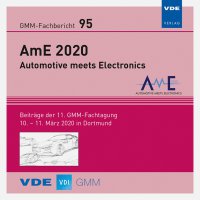A simulation-based, statistical approach for the derivation of concrete scenarios for the release of highly automated driving functions
Conference: AmE 2020 – Automotive meets Electronics - 11. GMM-Fachtagung
03/10/2020 - 03/11/2020 at Dortmund, Deutschland
Proceedings: AmE 2020 – Automotive meets Electronics
Pages: 6Language: englishTyp: PDF
Authors:
Weber, Nico; Frerichs, Dirk; Eberle, Ulrich (Opel Automobile/Groupe PSA, Rüsselsheim, Germany)
Abstract:
The technical development of highly automated driving functions (SAE level ≥ 3) has progressed so far that a market launch is anticipated in the short to medium term. The biggest challenge for a fleet approval is the validation and safety proof. Existing approaches such as the statistical, distance-based proof of safety would require billions of test kilometres under representative conditions prior to market launch. This cannot be accomplished by physical testing. Therefore, new methods for the release of highly automated driving functions are currently under development. One of these methods is the so-called scenario-based approach, as proposed by project PEGASUS. It is based on the assumption that a reduction of the test effort is to be expected when testing exclusively critical scenarios. However, this test effort still exceeds the existing capacity in practice by far. In the scope of the present work approaches for the above-mentioned reasons are investigated, which have the potential to further reduce the parameter space of critical scenarios by using the scenario-based approach. The basis is a simulation framework, which consists of a coupled traffic and vehicle dynamics simulation. The core of the solution is a statistical evaluation of relevant influence parameters describing a logical scenario for the derivation of discretization stages of these parameters. It is shown that for the application of the Traffic-Jam-Chauffeur, there is a parameter space reduction of factor 45 for 3-wise and of factor 30 for 10-wise test coverage in case of the considered functional scenarios. In addition, the potential of a simulation-based determination of occurrence probabilities and value ranges of the influence parameters becomes clear. This manifests itself for the functional scenario cut-in in form of a time saving factor of 2000 compared to real-world testing.


